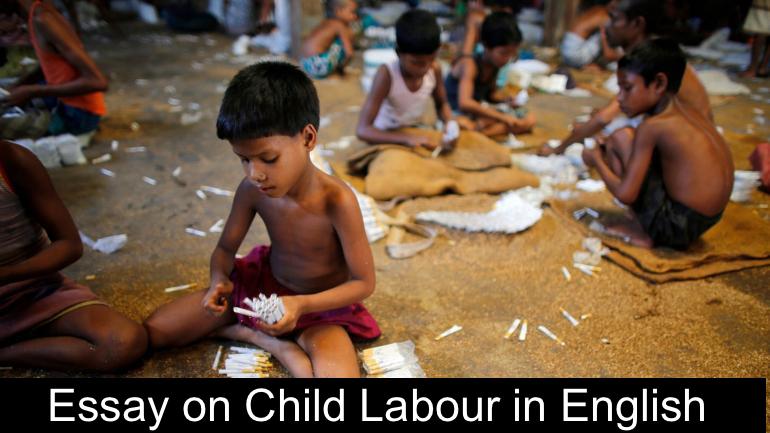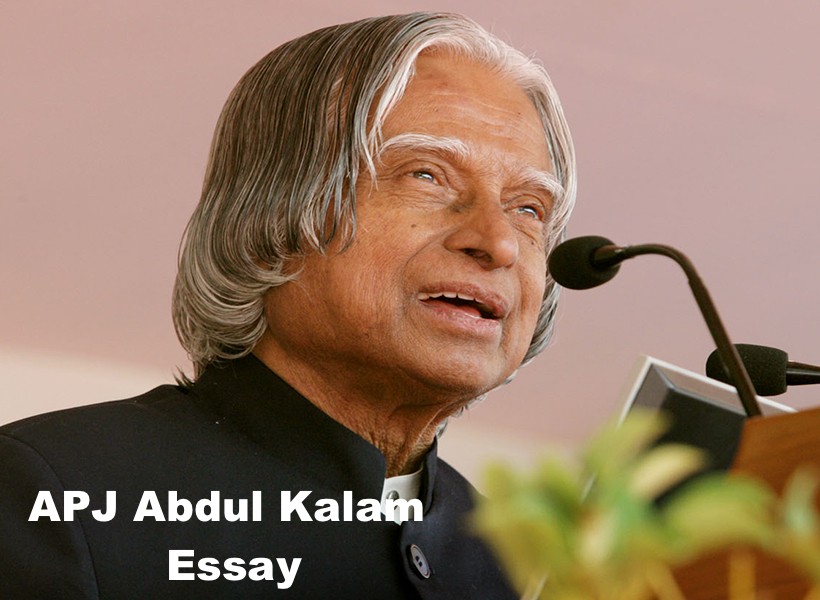Hello Friend This is special category for our small reader who study in school. If they looking for english essay for their school homework or any kind of english essay article then this special category might help you all guyz. in this article we will share Child Labour Essay in English for all class children and student . Initially we have published 800 word article for Child Labour.
Essay on Child Labour in English

The child is invested with certain rights Which must be recognized by the society, Children must not be deprived rights.
Some of these rights:
1. Right to protection from all forms of exploitation.
2. Right to survival, including right to life.
3. Right to development
4. Right to education
5. Right to Social uplift
6. Right to social security
7. Right to leisure and recreation
8. Right to freedom and expression, etc.
In the M. D. Mehta 20s the State of Tamil Nadu (AIR 1991-SC 4), the Supreme Court prohibited children below the age of 14 from being employed in any construction work (which) is clearly hazardous occupation.”
The Supreme Court al so said that”employment connected with manufacturing process in the match factory is not to be given to children, they can, however, be employed in packing process.” In Sheela Barse 0s Secretary,Children Aid Society, the Supreme Court observed:
“Children in Observation Homes should not be made to stay for long and as long as they are there, they should be kept occupied and the occupation should be congenial and intended to bring about adaptability in life aimed at bringing about a self confidence and picking of humane virtues.” (AIR 1987-SC 659).
In spite of all this, children’s rights are being violated must blatantly. Child labour is a common right in kiln, construction work, in restaurants, in shops, in houses, in factories and almost everywhere.
The poor children whom their parents cannot feed but want extra hands to augment the income of the family are exploited by the vested interests. It is their time to attend the school and they should not be deprived of their genuine right to education. The UN too admits certain rights of children like right to education, right to be well-treated and nursed properly etc. At an important meeting, the following rights of children were recognized:
i. improvement in buildings of schools;
ii. provision of modern facilities for practical subjects in schools;
iii. participation of students in assessments carried out by teachers;
iv. high standard in appointment of teachers;
v, provision of regular attendance of teachers;
vi. disciplinary action on teachers who force students to undergo tuitions;
vii. provision of facilities for games;
viii. promotion of cultural activities and establishment of libraries;
ix, strict implementation of child marriage and child labour laws;
x. mass awareness for equal opportunity in education for the girl child;
xi. free education for children of economically weaker families;
xii. elimination evils of society like liquor and gambling;
Xiii. special attention to the education of physically challenged children
Xiv. Saving of rivers and the environment;
XV. facilitation of guidance to children;
Xvi. participation of children in formulation of all policies related to development of children, and
Xvii. equal opportunity of education for children
If we have a close scrutiny of children’s demands, we will realize that they are the minimal and are genuine. Nobody can deny that for the healthy growth of society, it is imperative that we should have healthy and well-informed, enlightened children. It is of utmost importance that the children should be allowed to have an all-round development of their personality which is possible only if they get a congenial atmosphere at home and school and all facilities for proper growth without any let or hindrance.
If the children have to study in a class-room even devoid of proper ventilation and the minimum facilities such as fans, fluorescent tubes and even a black-board as in many Government primary schools, how can children be expected to grow into good students fit for higher studies matching international standards ? The study conducted by Prof. Amartya Sen, the Nobel Laureate under a special programme PROBE revealed that a very large number of schools in our country lacked such minimum facilities and had either dilapidated buildings or no buildings at all.
We know that many so-called public schools charge high fees and donation money from students’ parents and give almost nothing in return. They appoint substandard teachers who are not even qualified for their jobs. What justice can these teachers do? Then s0 many teachers Compel children to engage them privately for tuitions at their residence. For this, the students’ parents have to shell out more money.
Poor parents, indeed ! What cay they do ? They are helpless.
Gone are the days when the teachers were a dedicated lot. But the teachers grievances also seem genuine. They are not paid salaries equal to their qualifications. And even those meagre salaries are not paid regularly.So, they have to find out other means for subsistence. Let us all work honestly to let our children grow into great men and Omen.
Essay on Child Labour
India’s Future in Threat
Whenever we leave our house and take a stroll around, if we try to notice, we can easily see young children engaged in laborious works. The child may be a ELL rickshaw puller, a girl mill, a working in i boy working at a tea-stall or some Chhotu’ working as a domestic help at one of our neighbours house. Most of them are famished and overworked, and there seems to be no hope of getting their childhood back to them.
Child labour refers to the employment of children in any work that deprives children of their childhood, interferes with their ability to attend regular school and that is mentally, physically, socially or morally dangerous, and harmful. It is such a pity to learn that according to a census, India has one of the largest populations of child labourers.
The law on Indian soil says that any child below the age of 14 cannot be employed either in a factory or office or restaurant. In fact, India’s international business has been severely affected in many cases because child labourers, have been used at some stage or the other in manufacturing, packaging and transport of those items. However, laws are seldom enforced or followed in India.
In India, working children are engaged in different organised and unorganised sectors, both in rural and urban areas. In rural sector, children are engaged in field plantations, domestic jobs, forestry, fishing and cottage industry. In urban sector, they are employed in houses, shops, restaurants, small and large industries, transport, communication, garages etc. In India, working children are also self-employed as newspaper boys, milk boys, shoeshine boys, rag pickers, rickshaw-pullers etc.
About 78.71% of child workers are engaged in cultivation and agriculture, 6.3% are employed in fishing. hunting and plantation, 8.63% in manufacturing processing. repairs, house industry, etc., 3.21% in construction, transport, storage, communication and trade, and 3.15% in other services. At the time when they should be exploring things around them, they are exploited for selfish gains.
For much of human history and across different cultures, children less than 17 years old have contributed to family welfare in a variety of ways. In India, poverty is the biggest cause of child labour, Parents are forced to engage their children in labour as it brings them more money.
In factories and other establishments, children are employed because they are a form of cheap labour and can work for hours (unlike their older counterparts) on meagre wages. Also in rural and impoverished parts of the country, children have no other real and meaningful alternative.
When schools and teachers are unavailable and poverty 1s abject, child labour is the eventual result. Children work, instead of going to school, remain illiterate which limits their ability to contribute to their own-well! being as well as to the community they live in. We tend to forget the fact that a child is meant to learn, not to earn and Child Labour is nothing but ‘Child Abuse. So for a better Nation, we must stop ‘Child Exploitation.
Realising the effects of child labour, one can easily conclude that not only does it deeply destroy the tender age of childhood but also undermines the economic prosperity of the entire country. Children employed as labourers do not form a part of skilled workforce.
Hence, child labour must be banned at any cost. In 2013, the Punjab and Haryana High Court gave a landmark order that directed that there shall be a total ban on the employment of children up to the age of 14 years, be it hazardous or non-hazardous industries. However, mere passing of laws is not going to help; we have to enforce them strictly. Moreover, we cannot have the law keeping an eye on every miscreant. It is, therefore, the duty of every citizen to discourage such incidents and report them wherever possible. Awareness about the issue can do wonders to improve the current Sorry state.
Also Read:
- Essay on My Best Friend
- Reliance Jio Customer Care
- Essay on My School in English
- Essay on Family in English
- First Day at School Essay
- Corruption Essay in English
- Women Empowerment Essay
- Republic Day Essay in English
- Mahatma Gandhi Essay in English
- Essay on Global Warming in English
- APJ Abdul Kalam Essay in English
- Diwali Essay in English for Class





